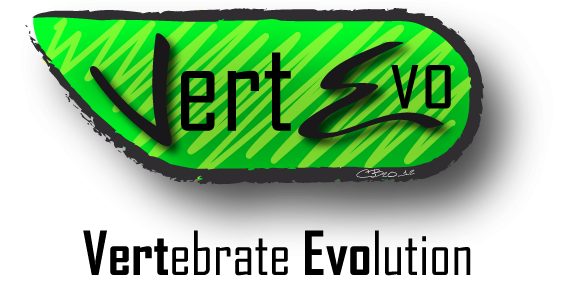Pushing the boundary?
 The giraffe’s iconic long neck puzzled us for centuries! Why is it so special?
The giraffe’s iconic long neck puzzled us for centuries! Why is it so special?
Almost all mammals have seven vertebrae in the neck, irrespective of the length of their neck. Mouse, dog, human, giraffe – all maintain the usual mammalian number of seven cervical vertebrae. The giraffe’s long neck is made of just seven, but extraordinary elongate bones. In addition, it was proposed already 100 years ago that the first vertebra of the trunk is functionally incorporated into the giraffe neck (Lankester 1908). Indeed, there is evidence for unique musculoskeletal features in agreement with increased mobility at the giraffe’s neck-trunk transition (Gunji & Endo 2016).
Together with my colleagues from the Nyakatura Lab at Humboldt University Berlin, we quantitatively tested the ‚functional elongation hypothesis‚ in a combined analysis of form and function of the neck-trunk transition from a broader phylogenetic perspective (Müller et al 2021 Evolution DOI: 10.1111/evo.14171). Our data set includes 37 extant ruminants and camelids as well as one extinct giraffid taxon. This sample of 3D vertebrae is freely available for download: Müller et al 2021 MorphoMuseuM DOI: 10.18563/journal.m3.129).

Müller et al 2021 Evolution DOI: 10.1111/evo.14171
We used 3D vertebral shape analysis (geometric morphometrics), we measured neck length, we performed convergence analyses and range of motion (ROM) analyses, always taking into account the phylogenetic relationships in our sample. This allowed us to test our main hypotheses:
- Diverging shape of the first thoracic vertebra (‚cervicalization of T1) and increased mobility at the neck-trunk transition in giraffes.
- Similarity/convergence of the last cervical vertebra (C7) shape in long-necked taxa.
Our results support our hypotheses: The giraffe’s T1 shape is unique and resembles a neck vertebra. In contrast to T1, the shape of C7 is convergent in long-necked taxa. Additionally, we found a ‘thoracalization’ of C7 in short-necked taxa. The giraffe’s unique neck morphology relates to the exceptional neck length, but also to the extraordinary neck posture. In contrast to other mammals, giraffes keep their neck in a relatively linear resting posture.
My colleague John Nyakatura presented our work at SICB 2021 (https://vertevo.de/sicb-2021-virtual-annual-meeting).
The collaborative work is part of my project on the Evolution of the axial skeleton in vertebrates. This project has received funding from the European Union’s Horizon 2020 research and innovation programme under Grant Agreement n°890809 — EDDI (Marie-Skłodowska Curie fellowship awarded to C.B.).
References:
Gunji M and Endo H (2016) Functional cervicothoracic boundary modified by anatomical shifts in the neck of giraffes. Royal Society Open Science DOI: 10.1098/rsos.150604.
Lankester 1908. On certain points in the structure of the cervical vertebrae of the okapi and the giraffe. Proceedings of the Zoological Society of London 78: 320-334. DOI: 10.1111/j.1096-3642.1908.tb01845.x
 Müller M A, Merten L, Böhmer C and Nyakatura J A (2021). 3D models related to the publication: Pushing the boundary? Testing the ‚functional elongation hypothesis‘ in the giraffe’s neck. MorphoMuseumM. DOI: 10.18563/journal.m3.129.
Müller M A, Merten L, Böhmer C and Nyakatura J A (2021). 3D models related to the publication: Pushing the boundary? Testing the ‚functional elongation hypothesis‘ in the giraffe’s neck. MorphoMuseumM. DOI: 10.18563/journal.m3.129.
Müller M A, Merten L, Böhmer C and Nyakatura J A (2021). Pushing the boundary? Testing the ‚functional elongation hypothesis‘ in the giraffe’s neck. Evolution. DOI: 10.1111/evo.14171
Nyakatura JA, Müller MA, Merten L, Böhmer C (2021) Analysing form and function of the cervicothoracic transition in cetartiodactyls confirms the ‘functional elongation hypothesis’ of the giraffe neck: Abstracts book: Society for Integrative & Comparative Biology (SICB), Virtual meeting. [Abstract]




Neueste Kommentare